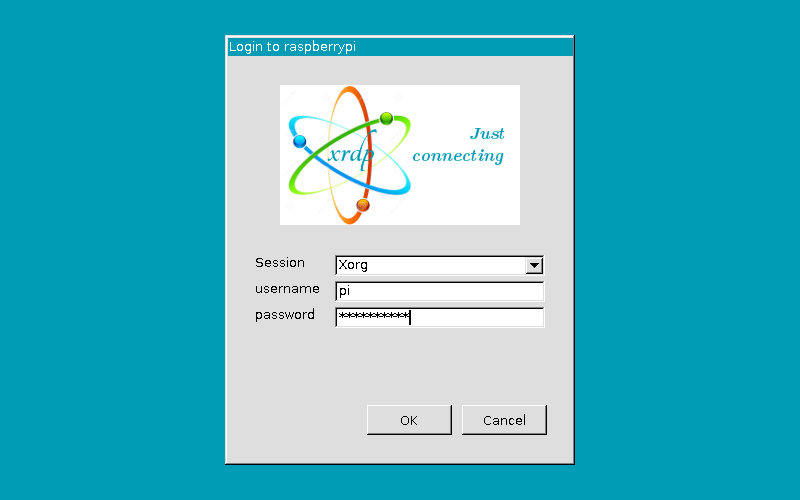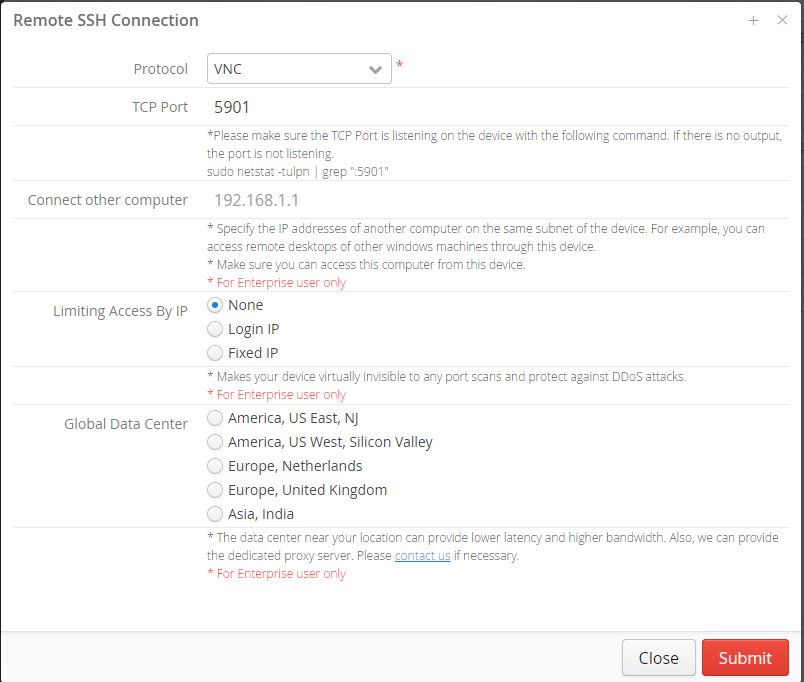With the rise of smart technology, Raspberry Pi RemoteIoT has become a cornerstone for enthusiasts and professionals alike who want to dive into the world of the Internet of Things (IoT). This versatile device allows you to control and automate various aspects of your home or business remotely, offering endless possibilities. Whether you're a beginner or an advanced user, understanding Raspberry Pi RemoteIoT is essential for creating innovative solutions.
Raspberry Pi RemoteIoT is more than just a tool; it’s a platform that empowers individuals to create custom smart systems. From monitoring environmental conditions to automating lighting and security systems, Raspberry Pi’s capabilities can transform how you interact with technology. With its affordability and flexibility, it's no wonder why it has gained such popularity in the tech community.
In this article, we will explore everything you need to know about Raspberry Pi RemoteIoT. We'll delve into its applications, setup processes, troubleshooting tips, and much more. By the end of this guide, you'll be equipped with the knowledge to start your own IoT projects and take advantage of the endless opportunities this technology offers.
Read also:India Web Series Ullu A Phenomenon Taking The Digital World By Storm
Table of Contents
- Introduction to Raspberry Pi RemoteIoT
- Understanding the Basics of Raspberry Pi
- Benefits of Using Raspberry Pi for RemoteIoT
- Step-by-Step Raspberry Pi RemoteIoT Setup Guide
- Applications of Raspberry Pi RemoteIoT
- Ensuring Security in Your Raspberry Pi RemoteIoT Projects
- Common Issues and Troubleshooting Tips
- Optimizing Raspberry Pi RemoteIoT Performance
- Future Trends in Raspberry Pi RemoteIoT
- Conclusion and Next Steps
Introduction to Raspberry Pi RemoteIoT
Raspberry Pi RemoteIoT is a powerful solution for those looking to integrate smart technology into their homes or businesses. The Raspberry Pi is a small, affordable computer that can be programmed to perform a wide range of tasks. By connecting it to IoT devices, you can control and monitor these devices remotely, creating a truly interconnected system.
One of the primary advantages of using Raspberry Pi for RemoteIoT is its versatility. Whether you're setting up a weather station, automating home appliances, or even creating a custom security system, Raspberry Pi can handle it all. Its ability to interface with various sensors and devices makes it an ideal choice for IoT enthusiasts.
Additionally, Raspberry Pi offers a wide range of community support and resources, making it easier than ever to get started with your RemoteIoT projects. With numerous tutorials, forums, and documentation available, you'll never feel alone in your journey to master this technology.
Understanding the Basics of Raspberry Pi
What is Raspberry Pi?
Raspberry Pi is a series of small single-board computers developed by the Raspberry Pi Foundation. Designed primarily to promote the teaching of basic computer science in schools and developing countries, it has since become a popular choice for hobbyists, makers, and professionals alike.
- Compact Design: The Raspberry Pi is incredibly compact, making it easy to integrate into various projects.
- Cost-Effective: With models starting at very affordable prices, it's accessible to a wide audience.
- Versatile: Supports a variety of operating systems and programming languages, offering flexibility in its applications.
Key Components of Raspberry Pi
Understanding the components of Raspberry Pi is crucial for successful RemoteIoT projects. Here are some of the key components:
- Processor: The Raspberry Pi features a powerful ARM processor capable of handling complex tasks.
- GPIO Pins: General Purpose Input/Output pins allow you to connect external devices and sensors.
- Networking: Built-in Ethernet and Wi-Fi capabilities enable seamless connectivity for RemoteIoT applications.
Benefits of Using Raspberry Pi for RemoteIoT
Using Raspberry Pi for RemoteIoT projects comes with numerous benefits. Here are some of the most significant advantages:
Read also:Indian Web Series Ullu A Thrilling Journey Into The World Of Digital Entertainment
- Scalability: You can easily scale your projects by adding more devices or sensors as needed.
- Flexibility: The Raspberry Pi can be programmed to work with various platforms and protocols, ensuring compatibility with most IoT devices.
- Community Support: A vast community of developers and enthusiasts provides extensive resources and support.
Moreover, Raspberry Pi RemoteIoT can help reduce costs associated with traditional automation systems, making it an attractive option for both personal and commercial use.
Step-by-Step Raspberry Pi RemoteIoT Setup Guide
Setting up Raspberry Pi for RemoteIoT involves several steps. Here's a comprehensive guide to get you started:
Step 1: Gather Necessary Equipment
Before beginning, ensure you have the following items:
- Raspberry Pi board
- MicroSD card with pre-installed operating system
- Power supply
- Network cable or Wi-Fi dongle
- Sensors or IoT devices you wish to connect
Step 2: Install the Operating System
Choose an appropriate operating system for your project, such as Raspbian, and install it on your MicroSD card. This step is crucial as it provides the foundation for all your RemoteIoT operations.
Step 3: Connect and Configure
Once your Raspberry Pi is powered on, connect it to your network and configure settings such as IP address, Wi-Fi credentials, and SSH access. These configurations will allow you to control your device remotely.
Applications of Raspberry Pi RemoteIoT
Raspberry Pi RemoteIoT can be applied in a variety of ways. Below are some of the most popular applications:
Home Automation
Control lighting, temperature, and security systems from anywhere in the world. With Raspberry Pi, you can create a fully automated smart home environment.
Environmental Monitoring
Set up a weather station or air quality monitoring system using sensors connected to your Raspberry Pi. This can provide valuable data for research or personal use.
Industrial IoT
Implement Raspberry Pi RemoteIoT in industrial settings for machine monitoring, predictive maintenance, and process automation. Its robust capabilities make it suitable for demanding environments.
Ensuring Security in Your Raspberry Pi RemoteIoT Projects
Security is a critical aspect of any RemoteIoT project. Here are some tips to ensure your Raspberry Pi setup remains secure:
- Update Regularly: Keep your operating system and software up to date to protect against vulnerabilities.
- Use Strong Passwords: Implement strong, unique passwords for SSH access and other accounts.
- Enable Firewall: Use a firewall to restrict unauthorized access to your device.
By following these security best practices, you can safeguard your Raspberry Pi RemoteIoT projects and protect sensitive data.
Common Issues and Troubleshooting Tips
Despite its reliability, Raspberry Pi RemoteIoT projects can sometimes encounter issues. Here are some common problems and how to address them:
- Connection Problems: Check network settings and ensure all cables are properly connected.
- Software Errors: Reinstall or update software if you're experiencing unexpected behavior.
- Hardware Failures: Inspect physical components for damage or wear.
Referencing official Raspberry Pi documentation and community forums can also provide valuable insights into resolving issues.
Optimizing Raspberry Pi RemoteIoT Performance
Optimizing your Raspberry Pi RemoteIoT setup can enhance its performance and efficiency. Here are some strategies:
- Optimize Code: Write efficient code to reduce processing overhead.
- Use Lightweight Software: Choose lightweight applications to minimize resource usage.
- Regular Maintenance: Clean up unnecessary files and perform routine maintenance tasks.
By following these optimization techniques, you can ensure your Raspberry Pi operates at peak performance for your RemoteIoT projects.
Future Trends in Raspberry Pi RemoteIoT
The future of Raspberry Pi RemoteIoT looks promising, with advancements in technology driving new possibilities. Some emerging trends include:
- Artificial Intelligence Integration: Incorporating AI capabilities to enhance automation and decision-making processes.
- 5G Connectivity: Leveraging faster and more reliable networks to improve real-time data transmission.
- Edge Computing: Processing data closer to the source to reduce latency and increase efficiency.
Staying informed about these trends will help you stay ahead in the rapidly evolving world of IoT.
Conclusion and Next Steps
Raspberry Pi RemoteIoT offers immense potential for transforming how we interact with technology. From home automation to industrial applications, its versatility and affordability make it an invaluable tool for IoT enthusiasts. By understanding the basics, setting up your device correctly, and following best practices, you can unlock the full potential of Raspberry Pi RemoteIoT.
We encourage you to take the next step by experimenting with your own projects. Share your experiences, ask questions, and engage with the Raspberry Pi community to further enhance your knowledge. Don't forget to explore our other articles for more insights into the world of IoT and smart technology.


